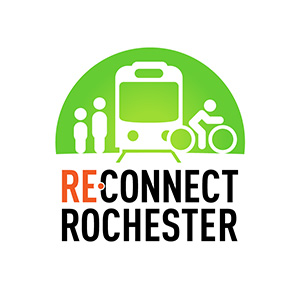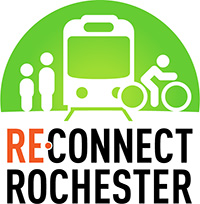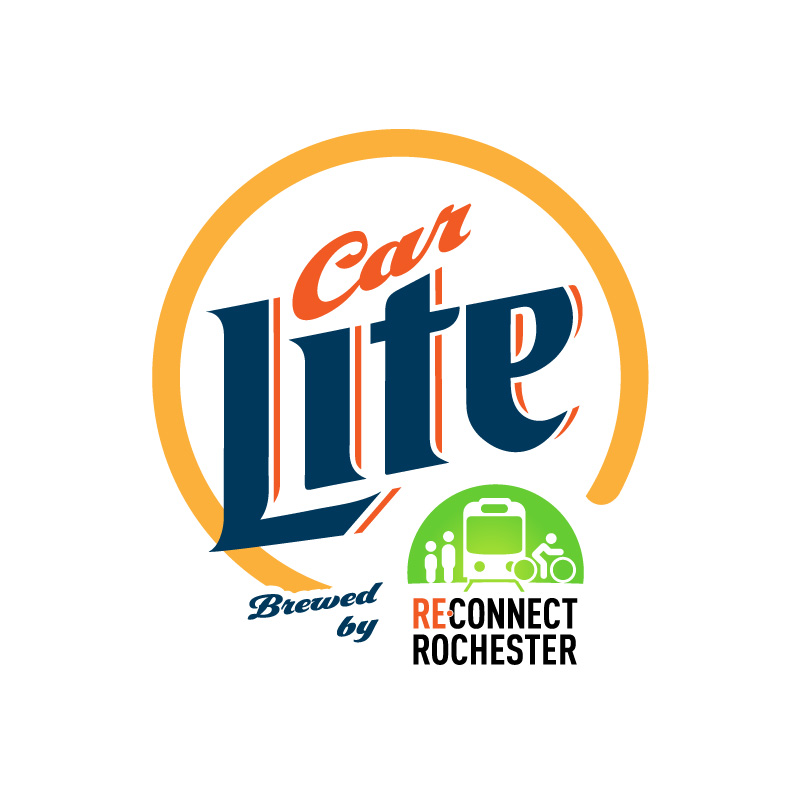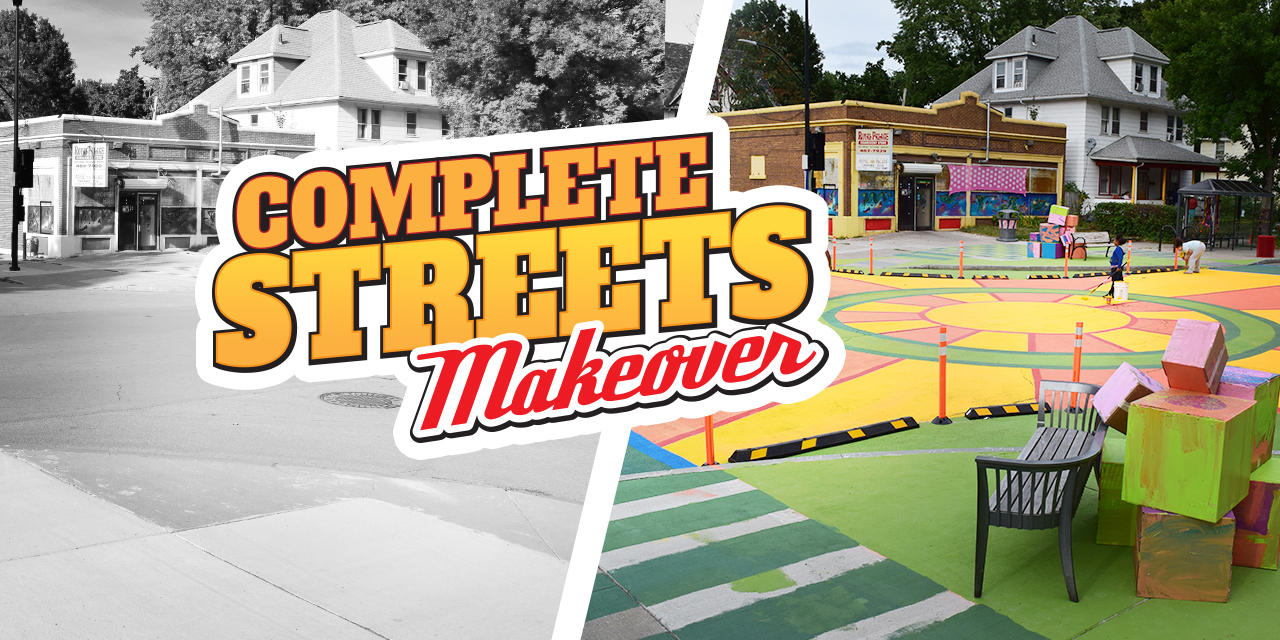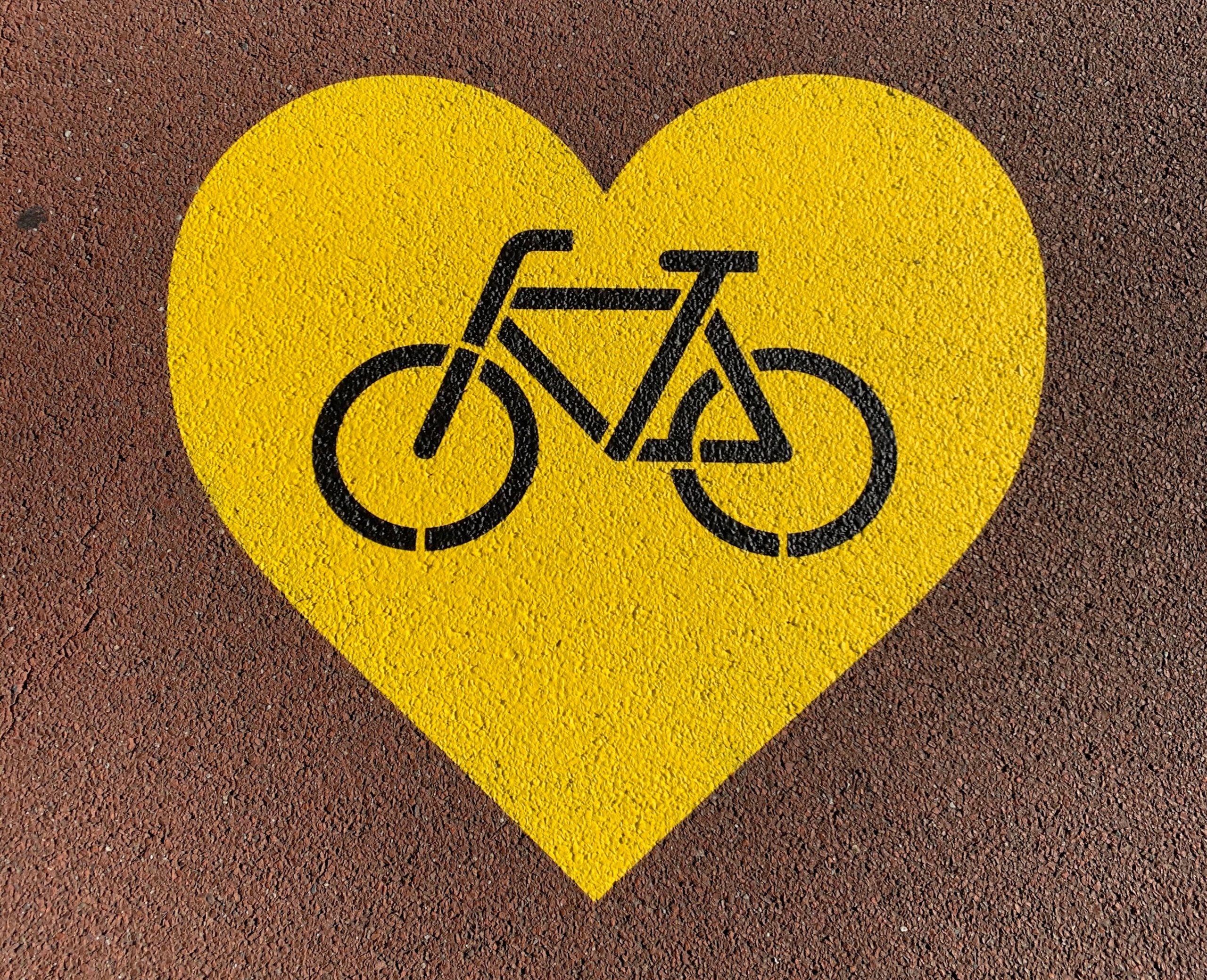Car Lite Rochester is a blog series that highlights the stories of Rochesterians living a car-lite lifestyle. The term “car lite” encompasses a variety of multimodal transportation lifestyles, featuring little dependence (but not NO dependence) on a car. It typically looks like sharing one car within a household or only using a car when absolutely necessary.
So, we hope you’ll continue to follow along. Maybe you will be inspired to join our bloggers in living a car-lite lifestyle!
Wanna rep it? Check out the t-shirt in our online shop.
A College Student’s Journey On Two Wheels & Transit
By Una Gogstetter:
As a college student who, like many others my age, doesn’t own my own car, living car lite has been necessary for me. My experience getting around Rochester with limited car access has been both enjoyable and eye-opening. I am a current sophomore at Smith College in Northampton, Massachusetts, with a Statistical and Data Sciences major, Urban Studies minor, and Community Engagement and Social Change concentration. Living without a car while away at college has also broadened my perspective on car lite living in Rochester

Car Lite in Rochester
For the past two summers, I biked or took the bus to my jobs (first at Corn Hill Navigation then at Rochester Area Community Foundation). While this was more by necessity than by conscious choice, I did particularly enjoy my experience biking. I would often listen to music through my earbuds on my way, the bike ride integrated exercise into my daily routine, and I was able to observe various people, houses, and businesses along my route.
Some of my favorite areas to bike have been the Railroad Loop Trail or passing by the lovely old houses on Park Avenue. Furthermore, RTS provided a convenient way for me to get to work in rainy weather—my house, near Cobbs Hill, is located in close proximity to a bus stop. I will likely spend much of this summer in Rochester and I intend to continue frequently commuting by bike or by bus.

The turn onto the Railroad Loop Trail.

The bike commute to my internship last summer involved this lovely section of Harvard Street.
While I’m lucky to have worked at locations I can travel to without a car, I am still cognizant of the ways in which access to transportation in Rochester could be expanded and improved. I have had to be mindful of transportation-related concerns when applying and planning my schedule for jobs and internships in Rochester, as I am unable to access many Rochester area locations without a car. Transportation-related logistics have also been a concern for me outside of work-related contexts.
Excursions ranging from dining out with a friend to purchasing a particular item I need to going on a family hike would be much more challenging without my parents and friends having cars. While it is of course possible to live car-free in many parts of Rochester, having zero access to a car would likely come with unavoidable drawbacks.
Although living car-free in any city comes with challenges, such challenges are greater in the absence of extensive public transportation systems as well as in the absence of comprehensive infrastructure supporting pedestrians and bicyclists.

Similarly to many cities, Rochester’s bike lanes are neither physically separated from car lanes nor consistently present even on busy streets. Therefore, the current arrangements force bicyclists to choose between riding beside automobiles or riding on the sidewalk. Furthermore, if someone is seeking to live a car lite lifestyle, and thus potentially biking rather than driving, their commute will likely coincide with rush hour—an especially dangerous time to bike in the road.
Comparisons with Northampton
Northampton is certainly imperfect regarding friendliness toward non-automobile forms of transportation. Its bike lanes are inconsistent, not physically separated from automobile traffic, and its bus system does not reach all areas of the city. Still the city has greater mindfulness of pedestrians in comparison to Rochester.
Crosswalks at locations other than traffic lights are much more common in Northampton. Pedestrians frequently utilize these crosswalks—the downtown area is often busy with people visiting the shops and farmers’ market. Additionally, drivers tend to be more considerate toward pedestrians. They consistently stop at the many crosswalks and, even outside of designated crossing locations, and display an awareness of pedestrians I wasn’t previously used to.

Overall, my experience living car lite in Rochester highlights the importance of Reconnect Rochester’s mission to “champion transportation choice”. Tangible improvements, such as expanding the public transportation system, implementing safer biking infrastructure, and creating more crosswalks, would be undeniably impactful. Such improvements, though, must perhaps be accompanied by a shift in residents’ attitudes. A high level of mindfulness toward pedestrians could become more normalized, as it is in Northampton. Biking, walking, and riding the bus would start to be seen as feasible alternatives to driving—a mindset shift that would be helped along by infrastructural improvements.
Improvements in the physical infrastructure and the public attitudes around car lite living in Rochester would allow residents with limited or no car access to get around more safely and easily. And any resident, car owner or not, could experience enhanced well-being and a deepened sense of connection to the city and its communities as a result of walking or biking more often.
At Reconnect, we’re inspired by the stories of people in our community, like Karen Nozik, Steve Roll, and Calvin Eaton, who are passionate about living a car-lite or car-free lifestyle. If you want to support our work and make it easier for others to go Car-Lite please donate and sign up for Mobility Action Alerts to stay in the loop with opportunities of how to advocate for safer streets and transportation options.
Let us know if you want to share your mobility story! What’s in it for you? The intrinsic reward of knowing you’ve inspired others, and a free t-shirt from our online shop! Contact Chaz to submit your story.
